Electricity -> current electricity
Current Electricity
Current electricity is the flow of electric charge through a conductor. This flow of electric charge is typically in the form of moving electrons. Current electricity is a fundamental concept in science and is the basis for many technological applications, including electrical circuits, power generation, and electronic devices.
Key Concepts
- Electric Charge: Electric charge is a fundamental property of matter. It can be either positive or negative. Electrons, which have a negative charge, are the primary carriers of electric charge in most materials.
- Current: Current is the rate of flow of electric charge. It is measured in amperes (A). One ampere is equal to the flow of one coulomb of charge per second.
- Conductors and Insulators: Materials can be classified as conductors or insulators based on their ability to conduct electric charge. Conductors, such as metals, allow the flow of electric charge, while insulators, such as rubber or plastic, inhibit the flow of electric charge.
- Electric Circuits: An electric circuit is a closed loop through which electric current can flow. It typically consists of a power source (such as a battery), conductive wires, and electrical components (such as resistors, capacitors, and light bulbs).
- Voltage: Voltage is the electric potential difference between two points in an electric circuit. It is measured in volts (V) and is the driving force that causes current to flow.
- Ohm's Law: Ohm's law states that the current flowing through a conductor between two points is directly proportional to the voltage across the two points and inversely proportional to the resistance between them. Mathematically, this relationship is expressed as I = V/R, where I is the current, V is the voltage, and R is the resistance.
Study Guide
When studying current electricity, it is important to understand the following key topics:
- What is electric charge, and how is it related to current electricity?
- What are conductors and insulators, and how do they impact the flow of electric charge?
- How are electric circuits constructed, and what are the essential components of a circuit?
- What is voltage, and how does it influence the flow of current in a circuit?
- What is Ohm's law, and how is it used to calculate current, voltage, and resistance in a circuit?
Additionally, practicing solving problems related to calculating current, voltage, and resistance using Ohm's law will help reinforce understanding of these concepts.
Experimenting with simple circuits and observing the effects of changing voltage, resistance, or components in the circuit can also provide valuable hands-on learning experiences.
Understanding current electricity is crucial for comprehending the functioning of electrical devices and systems, making it a foundational topic in the study of science and technology.
[Current Electricity] Related Worksheets and Study Guides:
.◂Science Worksheets and Study Guides Sixth Grade. Electricity
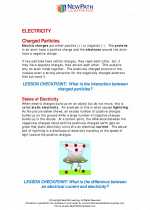
 Activity Lesson
Activity Lesson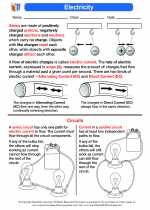
 Worksheet/Answer key
Worksheet/Answer key
 Worksheet/Answer key
Worksheet/Answer key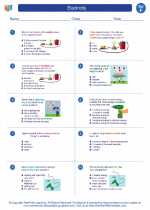
 Worksheet/Answer key
Worksheet/Answer key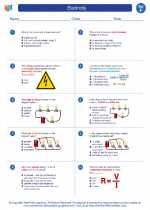
 Worksheet/Answer key
Worksheet/Answer key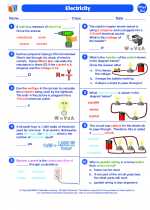
 Vocabulary/Answer key
Vocabulary/Answer key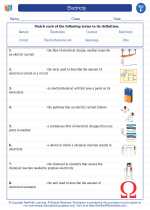
 Vocabulary/Answer key
Vocabulary/Answer key
